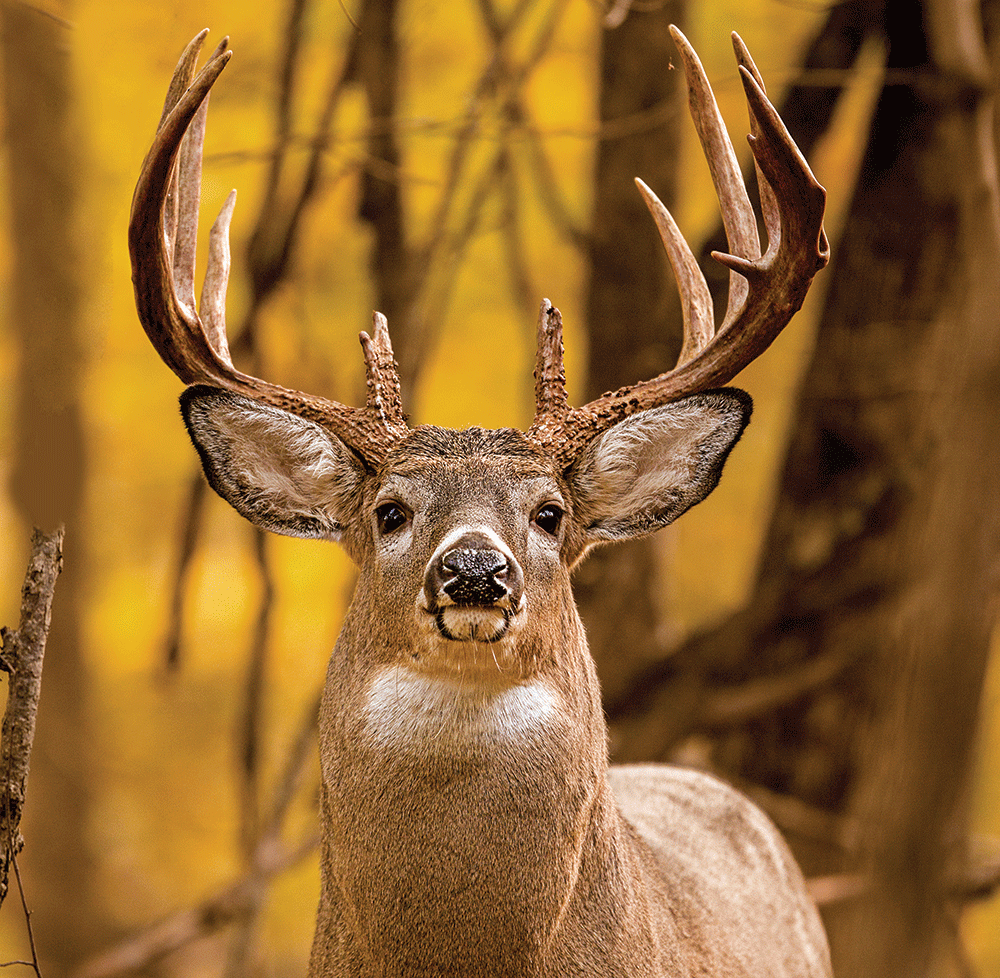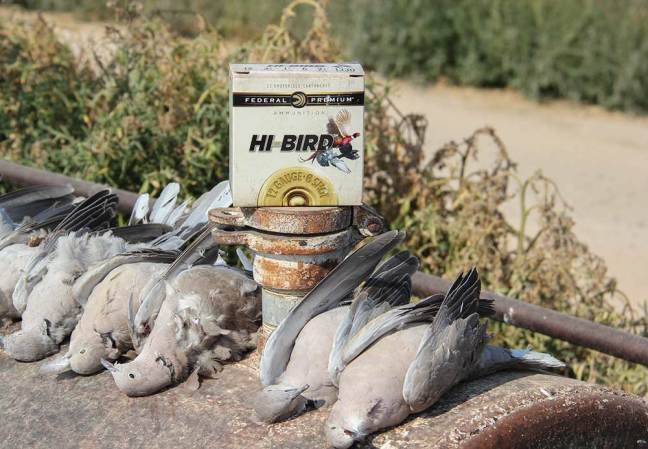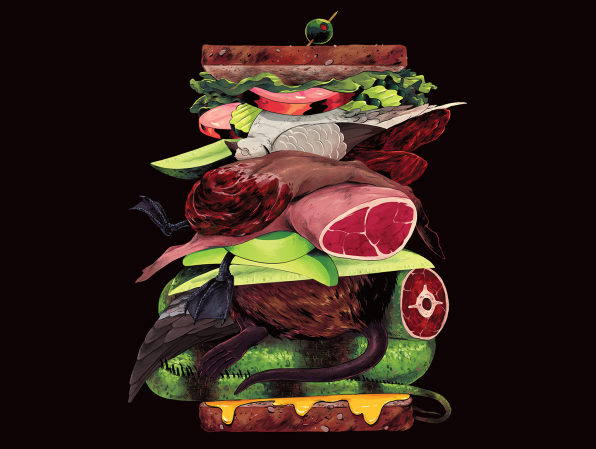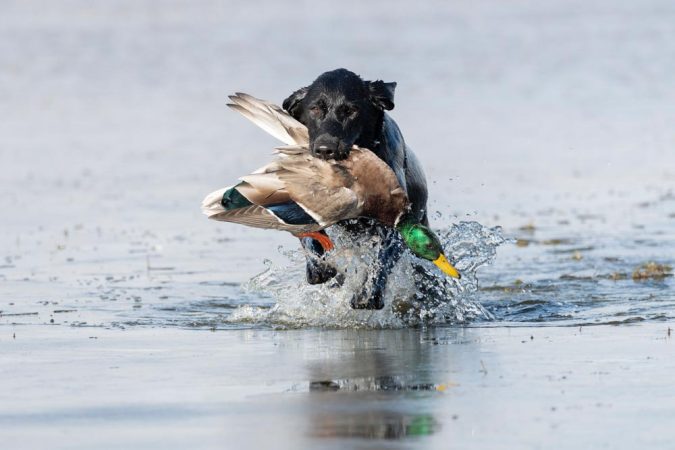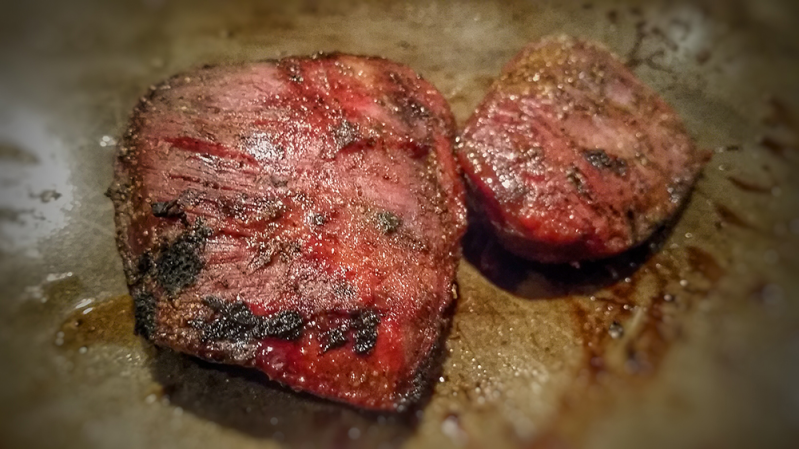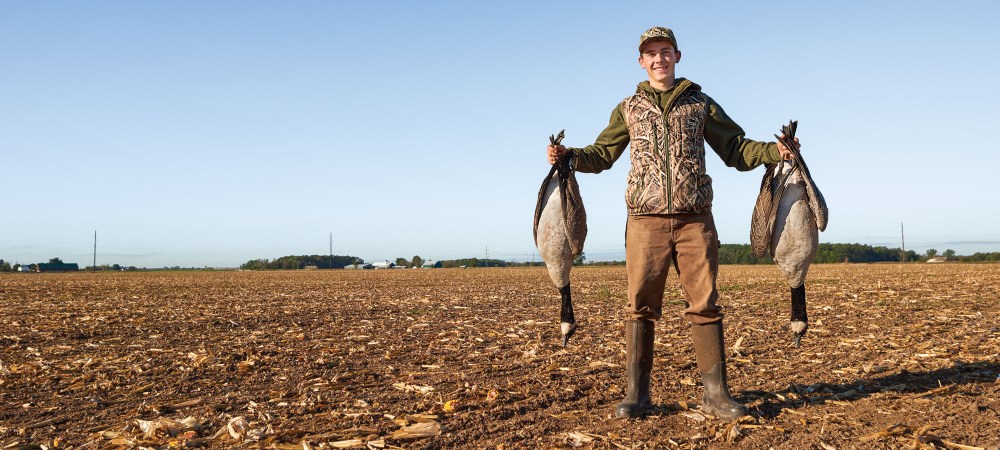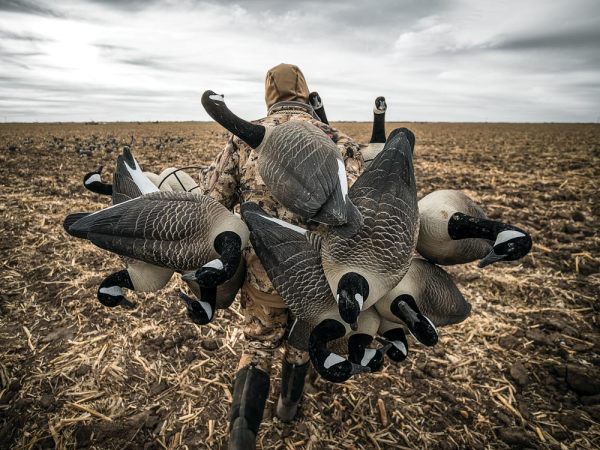You can feel it in your bones. The thermometer drops. Leaves crunch underfoot. The days grow short. October. The animals know it, too. Wildfowl abandon their northern breeding grounds. Brook trout erupt into spawning colors. Bucks get twitchy in each other’s presence, and the urge to put their antlers to use builds. Sportsmen get twitchy, as well. The imperative to gather meat gets sharper as the nights grow longer. October’s siren song beckons. But how to take advantage of this bounty before the month ends?
Waterfowl
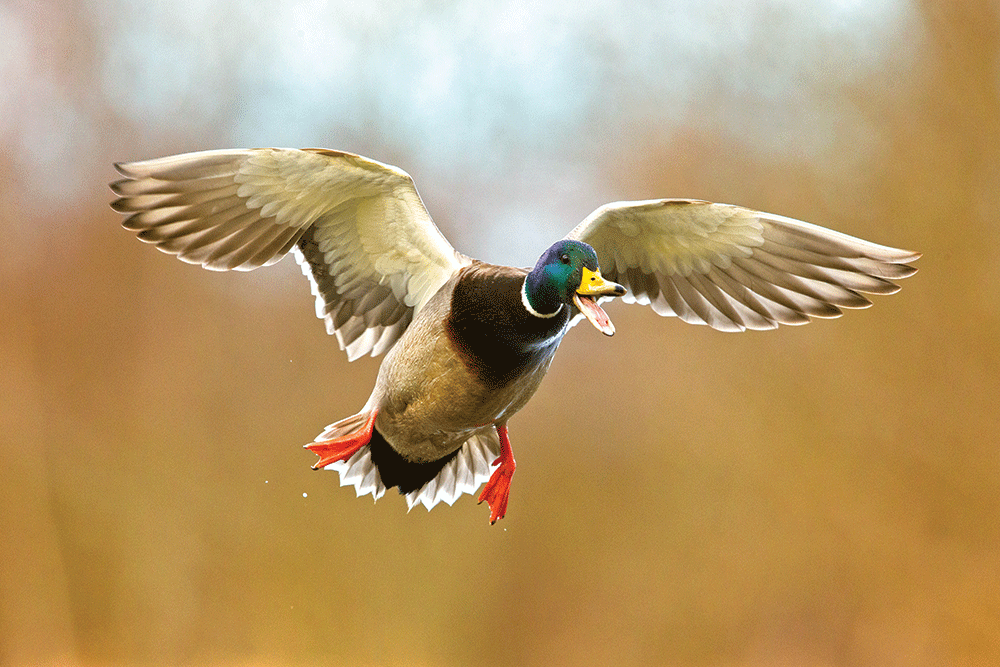
My birthday is in mid-October. When I was a boy, waterfowl season opened about then, and my dad and I would go to a marsh he called Duck’s Misery, although that may have been hyperbole on his part. We also headed to the nearby Mississippi River to hunt the millions of ducks and geese that followed the Father of Waters. I remember Dad awakening me at night to listen to migrating geese, and seeing mighty vees of Canadas heading south during the autumn days.
Later in life, I worked in Quebec City, where duck and goose season and Canadian Thanksgiving fell in October. The tip of Îls d’Orléans often provided a snow goose for dinner, and a bit farther north, legendary Cap Tourmente was home to legions of migrating snows and blues.
Across Canada, the blue sky is even more memorable than the turning maple trees. The air is pure and the passing clouds join the sky, fields, and trees in an unforgettable panorama. Nowhere is this more evident than on the Prairie Provinces of Saskatchewan, Manitoba, and Alberta, which are bathed in the warm hues of autumn, with fields uniformly golden as their crops lie in swaths, readying for the nearby elevator. These windrows provide prime concealment for hunters from the prying eyes of incoming geese and ducks, which are drawn to the rows of drying crops and their buffet of ripe grain and oil seeds. Even though I live back in the U.S. now, I still look forward to hunting north of the border.
October in Canada can begin with warm days and cool nights—good sleeping weather. But as the month wanes, winter comes with bitter cold and snow. Depending on when we hunt, we might encounter the diminutive Richardson’s goose, sometimes called a Hutchie, which is a little larger than a mallard. These are followed by the big Canadas. Then there are Ross’ geese—canvasback-sized snows—that challenge even the best shots because of their deceptively small size. They can be on top of you but look 30 yards out.
Waterfowl hunting on the prairies takes stamina. At dawn, hunters need to be in the exact field and and at the exact place where geese fed the night before to ensure a good hunt. Scouting is essential, and the sun in these provinces seldom sets before 8:30 or 9. Marking these spots with GPS coordinates, small flags, or driveway reflectors can get you right where you need to be the next morning. Being off by as little as 100 yards can turn your hunt into little more than bird watching.
October is often looked upon as a prequel to winter. But to a waterfowler like me, it’s the beginning of another wonderful season, whether it’s on Maryland’s Eastern Shore, along the Mississippi, or to the north in Canada. It brings me back to my excitement when the big Herter’s box arrived with new hip boots, replacing the leaky pair I had since outgrown, and the authentic World’s Finest decoy paint kit that shared the box. Our decoys didn’t look bad, but I still spent lots of evenings just touching them up, with visions of flocks of mallards hanging over them. It’s a time, too, to think about my dad, who taught me the love of the outdoors and hunting. I see him now, carefully putting his old, silver-worn Model 97 together and pocketing a handful of Super X No. 4s as we head out on another beautiful October day.
-By John Taylor
Upland
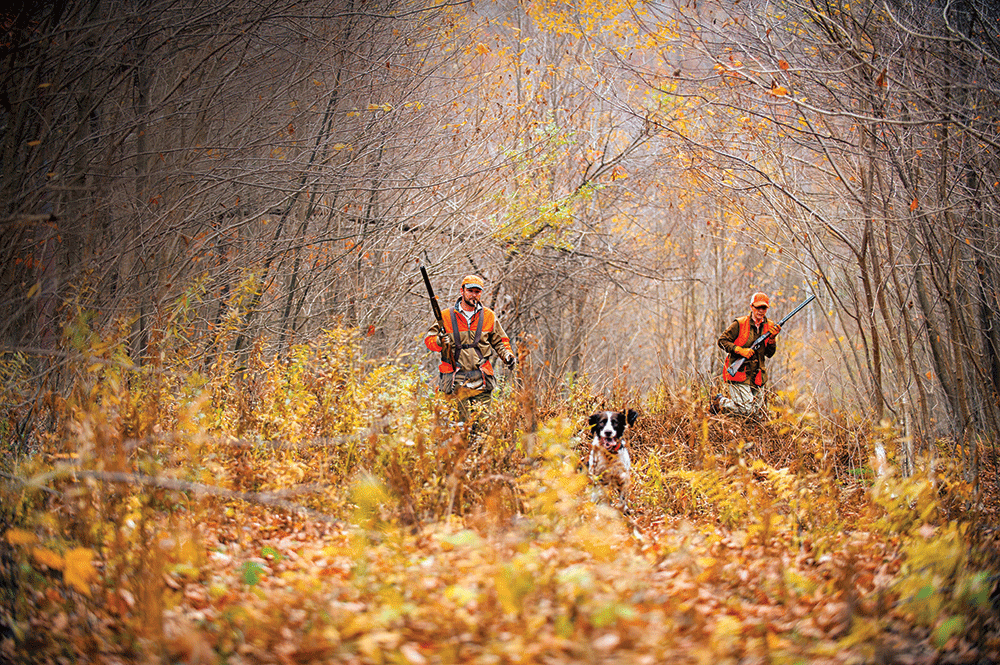
In fairness to September and November, it’s easier for upland bird hunters to love October, if for no other reason than that in most states, that’s when the season begins. But because I live in Montana and can hunt game from early September through mid-January, October is hardly the Grand Beginning. It’s more like the Big Transition, when after three weeks of bowhunting elk in backcountry solitude and wildness, I’m hankering for a change of pace.
Maybe I’m worn out from the daily grind of vertical terrain, but when autumn grips the lower elevations—foliage yellowing, grass a mixture of orange and lime—I’ll happily trade thick-timbered slopes and frost-covered alpine parks for the wide-open valley and its rolling wheat country. Suddenly I’m acutely aware that if I don’t immerse myself in this fleeting, spectacular transformation of the land below, I’ll wake up one morning to a brown, monochrome landscape and plenty of regrets.
Every calendar should come with a warning label: Perishable! October expires in 31 days! Thirty-one days seems ample time considering how endless February’s 28 days can be. But when you’re trying to cram in ruffed grouse, blue grouse, sharptails, Huns, and pheasants before winter comes knocking, well, who wouldn’t feel a little harried?
As much as I love elk in September and waterfowl and deer in November, October is the month when any day not spent afield feels like a wasted opportunity. When wheat is vibrant gold against bleached prairie grass, it seems unimaginable not to be walking the undulating contours of a stubble-field edge behind a ranging pointer. Years of Octobers have taught me that the last hours of daylight can be the most productive. Look for hungry birds within 75 yards on either side of the line that divides the field from the surrounding terrain. Also, keep an eye out for ditches and dips, which are often little honey holes for pheasants and sharptails.
What I love most about bird hunting is the walking. After weeks of gasping my way up mountainsides, acutely aware of where I place each boot, following a bird dog around feels wonderfully carefree. Granted, a woodcock hunter crouching and squeezing his way through an alder or poplar thicket might not feel similarly blessed. During these moments it pays to be silent. You can’t carelessly talk to your hunting partner or your dog and not expect birds to flush wild. But until those tension-filled seconds of creeping in on a point, gun poised, wondering exactly when and where the explosive and always surprising flush will occur, I’m free to take in the view and revel in the cool breeze tinged with the heady scent of decaying grass and leaves. October has a unique smell no matter where you live. Throw in the musty odor of wet dogs and dead birds on your way home, and you know you’re living large.
Years ago, my friend Dave told me he hunted birds primarily to watch his dogs work—that shooting birds was secondary. I remember rolling my eyes. Then I got pointers. I’m not saying pulling the trigger isn’t important anymore, but watching my last pointer, Jimmy, run was to marvel at the efficiency of his antelope gait—rhythmic, seemingly effortless, gobbling up the prairie with every bound. When he slammed on point with that 12 o’clock tail, I couldn’t wait to get close enough to see and hear him loudly snuffling in bird scent—as if, try as he might, he couldn’t get enough.
I understand the sentiment. Come November, when the trees are bare and the grass is dull brown, and the first major cold front has me listening in the dark for cries of migrating geese, I’m already conjuring scenes of decoying waterfowl and rutting bucks. And calculating how much meat I’ll need to fill the freezer. It’s part of being a generalist hunter.
But every year my excitement is tempered a bit by that nagging question I can never seem to shake: Did I really make the most of October?
– By Bill Buckley
Whitetails
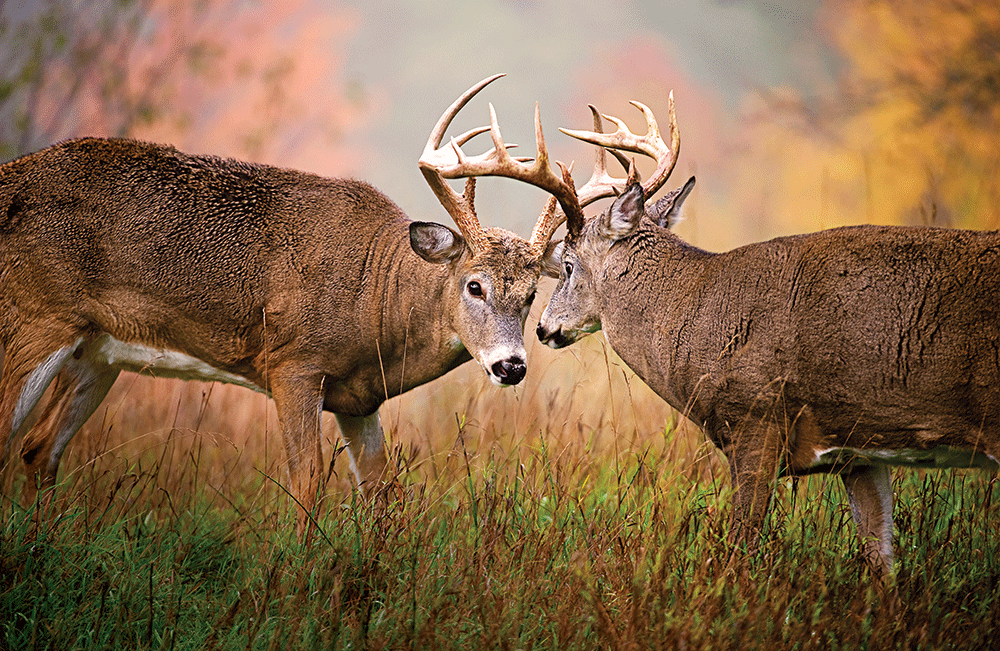
My countdown to October begins the moment the previous deer season ends. It’s daydreams of the blessed month that get me through the hellish hot nightmare of summer.
Experiencing boredom on stand in October is not a problem, since wildlife populations are at annual highs and migrations are ongoing. I have laughed aloud at rooster-size turkey poults racing for grasshoppers lulled to slow motion by a morning’s cold. Where I live in Kansas, no sound better says that it’s time to be deer hunting than the trilling calls of migrating sandhill cranes overhead.
Like many hunters, I like to arrow an acorn-fattened doe early in the season. Next to the BLT with our first homegrown tomato of the year, that first bite of backstrap—bacon-wrapped and grilled to juicy perfection—is the finest meal going.
My friend Greg Picket has taken more old, gnarly horned, pre-rut bucks in the first half of October than during the entire month of November. His tactic is as simple as walking a remote ridge and looking for an oak beneath which are crushed acorn hulls and droppings the size of malted milk balls. His stand is up within a few minutes. Mr. Big Poo often returns within a few hours.
October hunts are more laid-back than later ones, with whitetail rut activity getting better sit by sit. The first week is usually a time of yearling bucks and pencil-thick rubs. By mid-month, two-year-olds are coming in to grunts, and saplings as big as broomsticks are getting scarred.
It’s usually about the third week that I begin finding trees as thick as soda cans shredded, and scrapes as big as washtubs signed with hoofprints the size of a young heifer’s. During the last week of October, try sneaking close to bedding areas and do some rattling and grunting just before dark. With a deer’s testosterone on a steady increase, you stand a solid chance of getting some mature brute out of his bed a bit early to come investigate.
As trail cams and experience show, most monster buck rut activity is at night in October. But “most” is not “all.” Every year I talk to someone who was out the last week of the month, maybe with the help of an Arctic system, when Mr. Omigosh started his mating rounds early.
They tell of how just the sound of rattling antlers ticking together caused the hair on the buck’s super-size neck to raise, his eyes to bulge, and his legs to come charging in their direction. Hopefully, this October will be when that happens to me.
–By Michael Pearce
Western Big Game
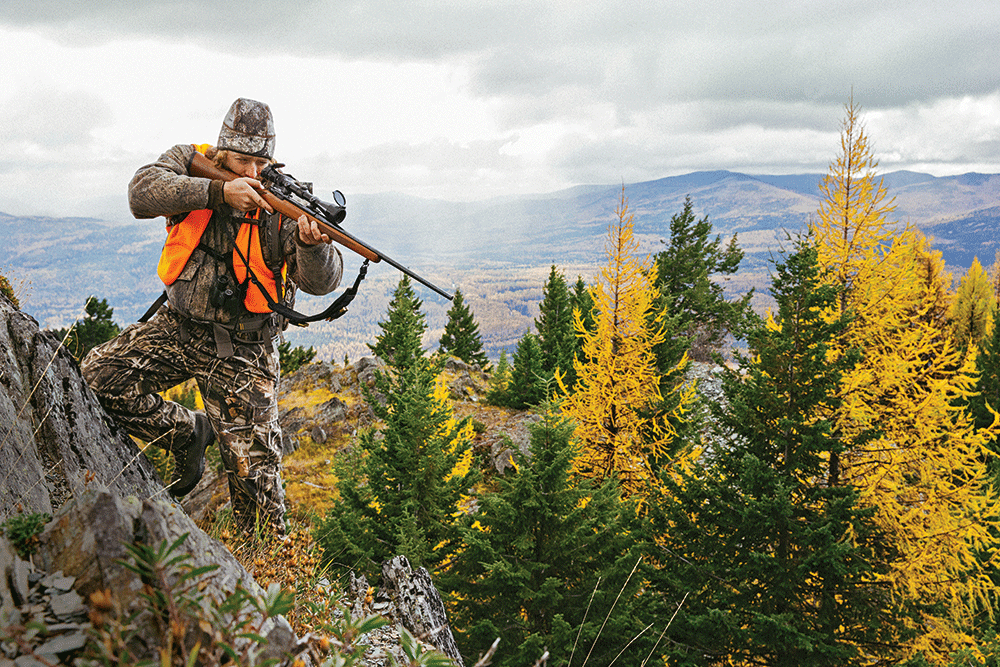
November is a fine month for putting up winter’s venison supply. But October is glorious, all bright and crisp, summer fat and ripe for harvest.
If hunting is about more than just survival, and it surely is, then October is the golden month, the perfect time for wandering prairies and mountains in search of game.
This is our time to reconnect with the real world, to drink deeply the balm of the wild, to refresh our sagging spirits and satisfy our appetite for venison and adventure.
But how to spend those precious 31 days? You could pursue whitetails across the West, seeking them out in their riverside beds or in the productive buffers between ag land and mountains. Early in October, bucks remain faithful to their summer haunts, tiptoeing over familiar routes, having grown confident over the long off-season. They’ve stripped summer velvet and are beginning to avoid old compatriots, but they are not yet besotted and befuddled by the scents and sights of females. October may be the best time to catch an old buck whitetail with his guard down.
Mule deer bucks are similarly vulnerable. From High Plains grasslands to high mountain passes, bachelor bands are breaking up, tipping tines toward one another in mock challenge, warning of more serious altercations to come. As they drift their separate ways, they lose the advantage of a herd with multiple eyes, ears, and noses. Glass from afar. Look for wide racks sticking above the sage. Slip downwind and then crawl in for an intense encounter.
But leave some time for pronghorns. America’s fastest big-game animal is at its speedy, frenetic best this month. Hook-horned bucks go galloping, sprinting, circling, and jousting over yellow grasslands and sagebrush ridges as they corral females and rout other bucks attempting to steal them. This is the month to point your nose at the horizon and walk into the freedom of the big sky.
Then there are the mountain monarchs. Elk, moose, caribou, mountain goats, wild sheep, black bears, and grizzlies. From Colorado’s lemon-yellow aspen groves to British Columbia’s snow-capped wilderness, hunters haul canvas camps deep into the mountains. The creak of saddle leather, the oddly reassuring bump of a rifle scabbard under your leg. Guy lines are stretched taut, wood is chopped and split, Coleman lanterns are pumped and lit, creek water is hauled in buckets. The perfume of wood smoke wafts through the trees. With camp set and dinner done, drinks in hand, the campfire down to glowing coals, you may hear the howl of wolves, the screech of a hunting owl, the thin whistle of a distant bull not quite ready to give up the rut. He is on that high ridge, there, a jagged silhouette of fir tops under the silver arc of the Milky Way. Be there at dawn and he’s yours.
–By Ron Spomer
Fishing
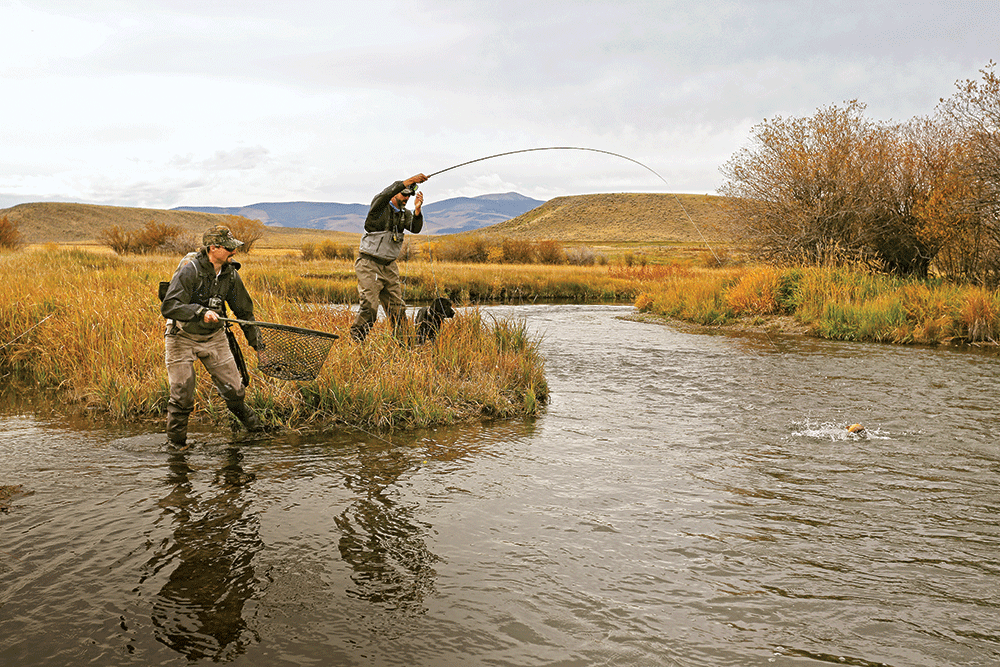
I hear the drag first—a couple of whiny rips typical of a spinning reel reluctant to give line to a powerful fish. Then Mark Courts speaks in a voice affected by surging adrenaline, and the fight is on.
“It’s a giant!” he says as the rod bends double.
It was—a smallmouth of any angler’s dreams. Big. Brown. Thick. Well over 5 pounds, maybe busting 6.
And we hadn’t even launched the boat yet. Mark hooked the fish while casting from the boat ramp dock as I was backing the boat in.
I love October. I look forward to its coming and mourn its ending. There is no other month like it. Cool mornings and warm afternoons. It’s also the month when fall-only patterns offer anglers exceptional opportunities.
Courts and I were fishing the St. Croix River, a ribbon of pure, clean water teeming with smallmouths, muskies, and walleyes that forms a portion of the border between Wisconsin and Minnesota.
Every October—and this is true on many rivers across the country, when water temps drop to 50 and below—smallmouths move from shallower upriver reaches to winter in the deeper waters above dams. Don’t limit your search to just the dam itself. I commonly find fish as far as 4 to 5 miles upstream—the keys are deepwater access and current.
By day’s end, we landed 30 or more bass, most coming from places where the main river channel slammed into shoreline-based structure, offering rock and deep water. Cranks and craws did the most damage.
And October offers other opportunities.
Trophy walleye guys wait all year for the October full moon to troll artificials for giant fish that move nightly to feed over reefs. I know a dude who landed his personal best—a thick 10-pounder—on just such a night. And then he dialed his buddy in another boat to share the news. His friend didn’t have time to talk—he was unhooking an 11-pounder.
Here’s the secret: long-line troll shallow-diving minnow baits in size 11 or 13. I run 12-pound Berkley Nanofil as the main line for increased sensitivity (you know instantly if you pick up grass or moss) and a 3-foot leader of 10-pound fluorocarbon for both invisibility and to keep the bait down.
October is also a month favored by fall-spawning fish such as lake trout and other char, like brookies, which move to spawning reefs and rivers this month.
I have never experienced a lights-out laker spawn bite, but that’s okay because there is nothing like chasing big brookies at this time of year. These fish, particularly the males, are a brilliant, living, swimming palette of colors. I tend to hold each fish a bit before releasing it, just to marvel at its beauty.
I learned years ago that big October brook trout are not dainty eaters. Big Muddlers, rabbit-fur mice, large spinners, stickbaits, and other meaty patterns are the ones that take the biggest fish in waters that feature brookies measured in pounds, not inches.
Ciscoes and whitefish also spawn now, a phenomenon mostly overlooked by anglers other than passionate muskie hunters. These fish need cool water throughout the year, which drives them to deep water during the summer months. Massive muskies (and pike) follow them there, roaming in places that are difficult for anglers to consistently find and catch them.
That changes in October, when muskies follow their prey to shallow, windswept reefs.
Want to break 50 inches? This is your month. These giants haven’t been targeted all year, and they are there to feed. Huge cranks and soft-plastics are typically best. Try trolling now, and increasing your boat speed.
October success is by no means a freshwater-only opportunity. There are some killer bites in saltwater, too.
My favorite takes place off the coast of Venice, Louisiana, when giant yellowfin tuna, looking to pick off an easy meal, start to show up behind shrimp trawlers. Get behind the right boat at the right time, and the action on tuna pushing 200 pounds is insane.
Yellowfin are a primary fall target for East Coast anglers in places like the Outer Banks in North Carolina, but wahoo fans wait for this time of year as well. Wahoo are often found mixed in with the tuna, giving anglers a crack at both species. The window is small, however, so take advantage of it when the fish are in.
–By Steve Pennanz
